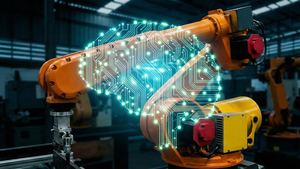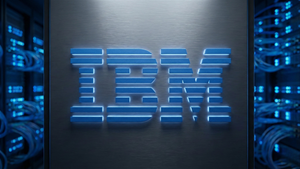
As November 2025 draws to a close, the artificial intelligence sector finds itself at a fascinating crossroads. While investment in groundbreaking AI technologies continues at an unprecedented pace, a growing undercurrent of investor caution is becoming increasingly evident. This dual sentiment stems from a cocktail of persistent macroeconomic pressures and the looming specter of major earnings reports and critical economic data releases, prompting a re-evaluation of the sky-high valuations that have characterized the AI boom. Investors are navigating a complex landscape where the undeniable promise of AI innovation is tempered by demands for tangible returns and sustainable profitability, pushing the industry into a more discerning era.
The Economic Headwinds and AI's Crucible
The prevailing economic climate is significantly shaping investor behavior in the tech and AI sectors. Persistent inflation has kept interest rates elevated for longer than many anticipated, with the US Federal Reserve delaying expected rate cuts throughout 2025. This "higher for longer" interest rate environment directly impacts growth-oriented tech companies, including many AI ventures, by increasing borrowing costs and reducing the present value of future earnings. Such conditions naturally lead to a more conservative approach from equity investors and M&A buyers, who are now scrutinizing balance sheets and future projections with renewed intensity. Some economists even suggest that the surging demand for capital driven by massive AI investments could itself contribute to upward pressure on interest rates.
Beyond monetary policy, geopolitical tensions continue to cast a long shadow. The ongoing US-China rivalry, coupled with regional conflicts in Ukraine and the Middle East, is driving a "seismic shift" in global trade and supply chains. This fragmentation and the push for supply chain resilience over efficiency introduce logistical complexities and potentially higher operational costs. For the AI sector, this is particularly pertinent due to its heavy reliance on advanced semiconductors and critical minerals, where governments are actively seeking to diversify sourcing. These uncertainties foster a "wait-and-see" approach, delaying strategic commitments and capital investments, even as the race for AI dominance intensifies. The collective weight of these factors is fueling concerns about an "AI bubble," especially as many generative AI companies are yet to demonstrate clear paths to profitability.
Navigating the Choppy Waters: Impact on AI Companies
This heightened investor caution presents both challenges and opportunities across the AI landscape, affecting startups and established tech giants differently. For AI startups, investment remains robust, particularly in foundational models, core AI infrastructure like model tooling and vector databases, and vertical Generative AI applications with clear, demonstrable return on investment. Investors are increasingly prioritizing startups with "defensible moats" – unique intellectual property, exclusive datasets, or innovative distribution methods. While late-stage funding rounds continue to see significant capital injections and record valuations, especially for prominent players like Anthropic and xAI, early-stage startups outside the immediate AI spotlight are finding follow-on rounds harder to secure as capital is redirected towards the perceived leaders in AI.
Meanwhile, established tech giants, often referred to as the "Magnificent Seven," are the primary architects of the massive AI infrastructure build-out. Companies like NVIDIA (NASDAQ: NVDA), Microsoft (NASDAQ: MSFT), and Alphabet (NASDAQ: GOOGL) are pouring hundreds of billions into data centers and compute resources, largely financed by their robust balance sheets and strong profits from existing revenue streams. However, this aggressive spending spree is beginning to draw scrutiny, with analysts questioning the long-term return on investment for these trillions of dollars in AI spending. Concerns are mounting about the pace of corporate borrowing to finance this build-out, and the risk of strategic missteps – such as overbuilding capacity or backing innovations that fail to gain market traction – is a growing consideration for these industry titans. The competitive landscape is becoming fiercely consolidated, favoring those with deep pockets and established market positions.
Broader Implications: AI's Role in a Shifting Global Economy
The current period of investor caution marks a significant inflection point in the broader AI landscape. It signifies a transition from an era of pure speculative fervor to one demanding tangible value and sustainable business models. While the underlying technological advancements in AI continue at a breathtaking pace, the market is now more acutely focused on how these innovations translate into profitability and real-world impact. This shift could lead to a more disciplined investment environment, potentially accelerating market consolidation as less viable AI ventures struggle to secure funding, while well-capitalized and strategically sound companies thrive.
The implications extend beyond mere financial metrics. This scrutiny could influence the direction of AI research and development, pushing companies to prioritize applications with immediate commercial viability over purely exploratory projects. It also raises potential concerns about the concentration of AI power in the hands of a few well-funded giants, potentially stifling innovation from smaller, independent players. Comparisons to previous tech bubbles are inevitable, but AI's foundational nature – its ability to fundamentally transform every industry – suggests a different trajectory, one where the technology's long-term value is undeniable, even if its short-term investment path is bumpy. The current environment is a test of AI's economic resilience, challenging the industry to prove its worth beyond the hype.
The Road Ahead: What to Expect in AI Investment
Looking ahead, the AI investment landscape is poised for continued scrutiny. Near-term developments will heavily hinge on upcoming economic reports, such as the delayed September jobs report, and any hawkish or dovish commentary from Federal Reserve officials, which could directly influence interest rate expectations. Major earnings reports from key tech players, particularly NVIDIA (NASDAQ: NVDA), will be pivotal. Analysts anticipate strong performance from AI-related demand, but any failure to meet lofty profit expectations could trigger significant market re-pricings across the sector.
In the long term, experts predict a sustained focus on profitable AI applications, sustainable business models, and strategic partnerships that can weather economic uncertainties. The challenges ahead include not only justifying the massive investments in AI infrastructure but also navigating evolving regulatory landscapes and managing the intense competition for top AI talent. What experts anticipate is a more discerning investment environment, where capital flows increasingly towards AI solutions that demonstrate clear ROI, scalability, and a robust competitive advantage. The era of "build it and they will come" is giving way to "build it, prove its value, and then they will invest."
A Pivotal Moment for AI's Financial Future
In summary, the current investor caution in the tech sector, particularly regarding AI, represents a crucial phase in the industry's evolution. While the allure of AI innovation remains potent, the market is unequivocally signaling a demand for demonstrated value and sustainable growth. The macroeconomic forces of inflation, elevated interest rates, and geopolitical tensions are acting as a crucible, testing the resilience and long-term viability of AI companies.
This period marks a shift from pure speculation to a more mature investment environment, where the focus is on tangible returns and robust business models. The coming weeks and months will be critical, with central bank announcements and earnings reports from AI leaders like NVIDIA (NASDAQ: NVDA) serving as key indicators of market sentiment. The long-term impact will likely be a more consolidated, efficient, and ultimately, more impactful AI industry, driven by solutions that deliver concrete benefits. Investors will be watching closely for signs of profitability, strategic partnerships, and a clear path to justifying the monumental investments being made in the future of artificial intelligence.
This content is intended for informational purposes only and represents analysis of current AI developments.
TokenRing AI delivers enterprise-grade solutions for multi-agent AI workflow orchestration, AI-powered development tools, and seamless remote collaboration platforms.
For more information, visit https://www.tokenring.ai/.








